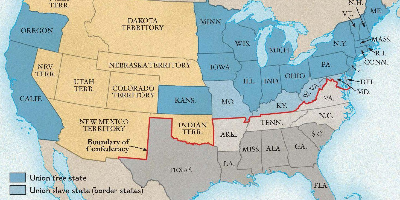Presidency of William Henry Harrison (1 h 4 mar 1841 año – 4 abr 1841 año)
Descripción:
Party: WhigVice President: John Tyler (succeeded to presidency)
Previous Occupation: US Minister to Colombia
On March 26, 1841, Harrison became ill with a cold—according to the prevailing medical misconception of that time, his illness was believed to be caused by the bad weather at his inauguration, but the illness did not arise until more than three weeks afterwards. Harrison tried to rest in the White House, but could not find a quiet room because of the steady crowd of office seekers. His extremely busy social schedule also made rest time scarce.
Harrison's doctors tried several cures, such as applying opium, castor oil, leeches, and Virginia snakeweed, but the treatments only made Harrison worse and he became delirious. He died nine days after becoming ill, at 12:30 a.m. on Sunday, April 4, 1841. Harrison's doctor, Thomas Miller, diagnosed Harrison's cause of death as "pneumonia of the lower lobe of the right lung". A medical analysis made in 2014, based on Dr. Miller's notes and records of the White House water supply being downstream of public sewage, concluded that he likely died of septic shock due to enteric fever.
Harrison became the first United States president to die in office. His last words were to his doctor, but they were believed to be directed at Vice President Tyler: "Sir, I wish you to understand the true principles of the government. I wish them carried out. I ask nothing more." Harrison served the shortest term of any American president: March 4 – April 4, 1841, 30 days, 12 hours, and 30 minutes.
The president's body was borne through Washington. Solomon Northup gave an account of the procession in Twelve Years a Slave:
The next day there was a great pageant in Washington. The roar of cannon and the tolling of bells filled the air, while many houses were shrouded with crape, and the streets were black with people. As the day advanced, the procession made its appearance, coming slowly through the Avenue, carriage after carriage, in long succession, while thousands upon thousands followed on foot—all moving to the sound of melancholy music. They were bearing the dead body of Harrison to the grave....I remember distinctly how the window glass would break and rattle to the ground, after each report of the cannon they were firing in the burial ground.
Harrison's funeral took place in the Wesley Chapel in Cincinnati, Ohio, on April 7, 1841. His original interment was in the public vault of the Congressional Cemetery in Washington, D.C., but his remains were later buried in North Bend, Ohio. The William Henry Harrison Tomb State Memorial was erected at the gravesite in his honor.
Impact of death
The William Henry Harrison Memorial in North Bend, Ohio
Harrison's death was a disappointment to Whigs, who hoped to pass a revenue tariff and enact measures to support Henry Clay's American system. John Tyler, Harrison's successor and a former Democrat, abandoned the Whig agenda, effectively cutting himself off from the party.[119]
Due to the death of Harrison, three presidents served within a single calendar year (Martin Van Buren, Harrison, Tyler), which has occurred only one other time when Rutherford B. Hayes, James A. Garfield and Chester A. Arthur served in 1881.[120]
Harrison's death revealed the flaws in the U.S. Constitution's clauses on presidential succession. Article II of the Constitution states: "In Case of the Removal of the President from Office, or of his Death, Resignation, or Inability to discharge the Powers and Duties of the said Office, the Same shall devolve on the Vice President ... and [the Vice President] shall act accordingly, until the Disability be removed, or a President shall be elected". Scholars at the time disagreed whether the vice president would become president or merely acting president. The Constitution did not stipulate whether the vice president could serve the remainder of the president's term, until the next election, or if emergency elections should be held.
Harrison's cabinet insisted that Tyler was "Vice President acting as President". After the cabinet consulted with the Chief Justice Roger Taney, they decided that if Tyler took the presidential Oath of Office, he would assume the office of president. Tyler obliged and was sworn into office on April 6, 1841. Congress convened in May, and after a short period of debate in both houses, it passed a resolution that confirmed Tyler as president for the remainder of Harrison's term. Once established, this precedent of presidential succession remained in effect until the Twenty-fifth Amendment was ratified in 1967, following the assassination of John F. Kennedy and the succession of Lyndon B. Johnson to the presidency in 1963. The Twenty-fifth Amendment dealt with the finer points of succession, defining the situations in which the vice president would serve as acting president, and in which situations the vice president could become president
Añadido al timeline:
fecha:
1 h 4 mar 1841 año
4 abr 1841 año
~ 1 months

